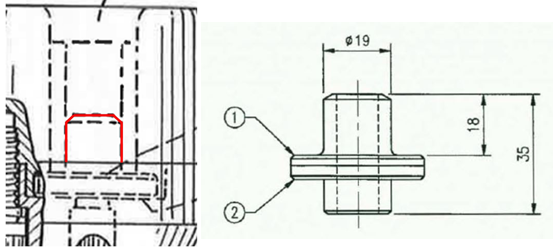Can you dig it? Patentees keep the best method to themselves
Patents – complete specification – best method – “performing the invention” – whether feature omitted from specific part of the best method known to the applicant for performing the invention
Sandvik Intellectual Property AB v Quarry Mining & Construction Equipment Pty Ltd [2017] FCAFC 138
The appellants (collectively, Sandvik) are the patentee and exclusive licensee of an Australian patent for an invention relating to a device that assists in the insertion and removal of support rods used to reinforce the roof of mining tunnels. Sandvik sued the respondent (Quarry Mining) for patent infringement and for misleading and deceptive conduct (by reason of Quarry Mining’s failure to warn its customers that the use of Quarry Mining’s products would infringe Sandvik’s patents). Quarry Mining cross-claimed seeking revocation on various grounds, but ultimately was successful in establishing its “best method” ground; that is, a description of the best method known to the inventors has not been included in the complete specification of the patent in suit. A valid patent being necessary for Sandvik’s claims, the learned trial judge dismissed Sandvik’s case and ordered revocation of the patent. Sandvik appealed the trial judge’s adverse findings on best method, novelty, inventive step and utility.
Section 40(2)(a) of the Patents Act 1990 (Cth) requires that a complete specification “describe the invention fully, including the best method known to the applicant of performing the invention”. The issue at trial was whether the depiction of the “preferred” form of the invention showed a flat water seal, or a shaped seal that included an upward extension. In other words, whether the diagram in the patent (extracted below left, with the relevant area marked in red) showed a seal similar to that which had been developed by Sandvik by the time the complete specification was filed (diagram on the right).

The trial judge concluded that the specification disclosed only a horizontal sealing member, and did not include any upwardly-extending part. The difference was not immaterial; one of the inventors had conceded that the seal design was a “real issue” that Sandvik had had to overcome.
On appeal, Sandvik did not challenge those findings. Rather, it argued that the seal “did not relate to a method of performing the invention”, alternatively, was not a part of the invention at all, and therefore was not required by section 40(2)(a) to be disclosed. The Full Court (Greenwood, Rares and Moshinsky JJ) rejected that argument. After a useful review of the relevant authorities, the Court identified at [115] a number of principles relevant to the issue. Of note, the “nature and extent of the disclosure required […] will depend on the nature of the invention itself”, and should take into account the underlying purpose of allowing the public the “full benefit of the invention”. The Court also noted that the invention was designed for use in an environment in which water would be used to flush away cuttings from a drill bit, and emphasised the inventor’s evidence that developing an effective water seal was a “real issue”. Accordingly, the presence of an effective seal was critical and required to be disclosed, and even if the seal was not part of the claimed invention, its use nevertheless was necessary and important to performing the invention described. As such, Sandvik’s appeal was rejected.
The Court also rejected Sandvik’s challenges to certain of the trial judge’s conclusions as to lack of novelty and want of utility. The Court upheld Sandvik’s appeal so far as it related to inventive step, primarily because the trial judge placed too much weight on a Quarry Mining expert’s evidence, when that evidence was founded on certain incorrect assumptions. In light of the Court’s conclusions as to best method, however, this did not affect the outcome of the appeal (although it did reduce Sandvik’s cost exposure slightly: see Sandvik Intellectual Property AB v Quarry Mining & Construction Equipment Pty Ltd [2017] FCAFC 158).
